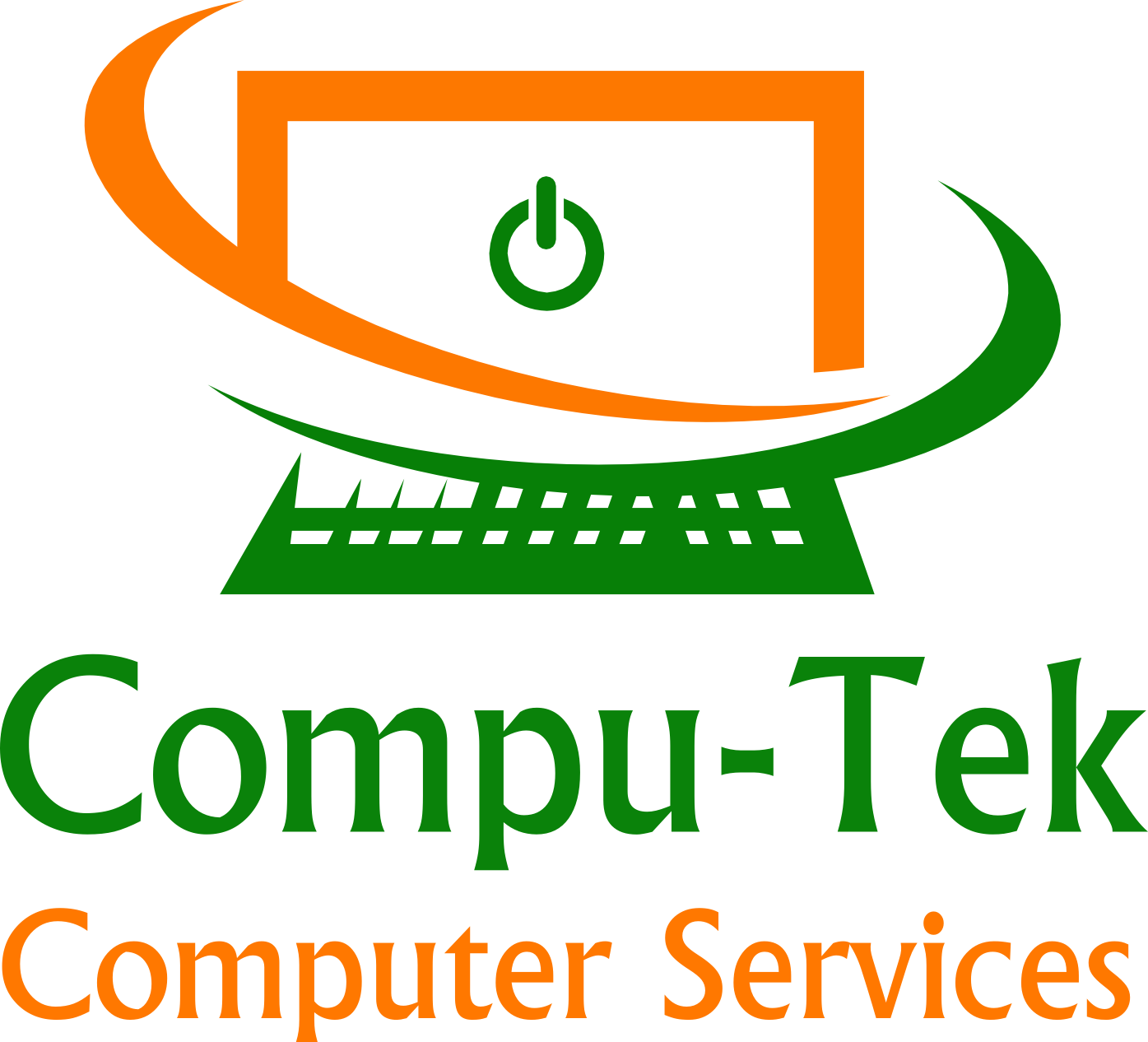Compu-Tek Tech Tips
Here are a few tips to give you and idea on what may be going wrong with your computer.
My computer won’t boot up:
My computer is very slow booting up or running:
Do I have a Virus?
Do I need antivirus software for my Mac.
What is Spyware?
Free and Friends software:
How large of a Backup drive do I need?
Don’t blow up your E-mail inbox!
Outlook Tech Tip:
Your computer works on two main components, software and hardware. The issues are usually separate and majority of the times it is software causing the problem.
My computer won’t boot up: When your computer first turns on it loads up the BIOS (Black screen with white text or manufacture logo) If you don’t see this the problem is probably hardware. If you see it start into Windows or for Mac uses the horizontal barber pole. Then the problem is most likely Software.
My computer is very slow booting up or running: Slow computer can be a hardware problem such as not enough ram or just old hardware. It can also be spy ware or Virus on your computer. The lack of not enough ram can really slow your PC down and put extra wear an tear on your hard drive. When your computer boots it loads some of the software into Virtual memory (back onto the hard drive). It also does this while running if there is not enough ram.
For Windows 7 users you should have at least 2-4GB of ram, 8 is recommend. Mac OSx 2-4GB or more.
Do I have a Virus? You probably have a virus if your friends or clients are complaining of receiving emails from you that you did not send or your computer behaves erratically or slow. Virus have even been known to occasionally damage hard ware or change the bios settings so your computer won’t boot at all. They can also wipe out your data or allow someone steal information. Spyware can also slow down your computer.
Do I need antivirus software for my Mac. Yes you do, a lot of virus don’t care if you have a Mac or PC and can also come though the web browser too. If you get a email infected with specific PC virus then send it to a friend or client with a PC, you will infect them and cause it to spread.
What is Spyware? Spyware steals information from your computer and sends it back to the originator. It usually monitors your browsing habits and send the back to the source. It can also steal important information from your computer such as monitoring your key strokes while you are typing in your bank account numbers! There is also viruses that do this too. Spyware can also really slow down your computer as it gathering this information.
Free and Friends software: There is no such thing as free software, it always comes with a catch or some advertising. Ask yourself why would someone do all this work for Free. The only real free software is open source, such as Linux. Most free Antivirus software is limited to make you buy the full version and can have unprotected areas that will still let a virus in. I.E. AVG free does not scan any files you download but the paid version does. Please stay well away from Pirated software, it’s security compromised in order to crack it and makes your computer vulnerable to virus or may have one already built in! Also any Windows or Office pirated software will not allow you to update at all and could mean a format to get rid or it!
How large of a Backup drive do I need? The backup size should be at least 2-3 times the amount of data currently on your system. Example: Your computer has a 500gb hard drive but only 150gb of space is used then you would need a 450gb external drive for backup space. Network Array Storage (NAS) Drives are the best. They can be put anywhere on the network and hidden in case of theft or fire.
Don’t blow up your E-mail inbox! Microsoft says not to exceed 2GB of your Outlook 2003 data (PST) file and 4GB for 2007. Your email is a message center for communication and not a storage area, it was never designed for that. All the emails etc are stored on one data base and that one file is corrupt or lost so is all your info! Data bases require regular maintenance if large in size, no email program does this. I usually have to repair a clients e-mail data base before transferring the messages.
I highly recommend to save a copy of the important Emails in “My Documents†folder. You can do this by opening the email go to “file†then click “Save asâ€. The default location should be My Documents. Then you can delete it from the inbox and keep your file size down. Note: If sent as “Text email†it will default to TEXT in the “Save as†box. it can be later on opened with Word.
If sent as an HTML (colors, embedded pictures etc) it will default the “Save as†to HTML, then later be viewed by a web browser. If you only need the text in the body of the email, then select “Save as TEXTâ€. i.e. If a brochure you want to see later then leave it as HTML.. Click just the “Save icon†only saves it to your Drafts folder.
You can also do this after composing an email, just before you send it click “Save asâ€! (Outlook actually uses MS Word as the default editor.)
Outlook Tech Tip: You can set Outlook 2013-2016 at start with any open folder, Inbox, Calendar, tasks etc. Go to: File > options > Advance > Start and Exit!
Free Desktop Backgrounds: Click Here or on any of the icons below to go to the download and instructions page.
